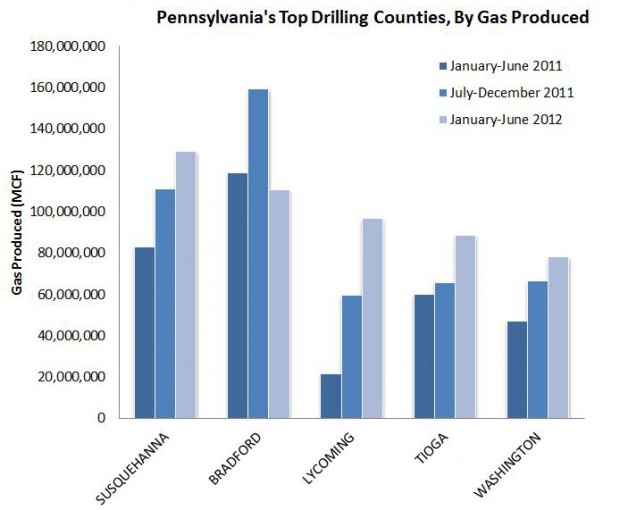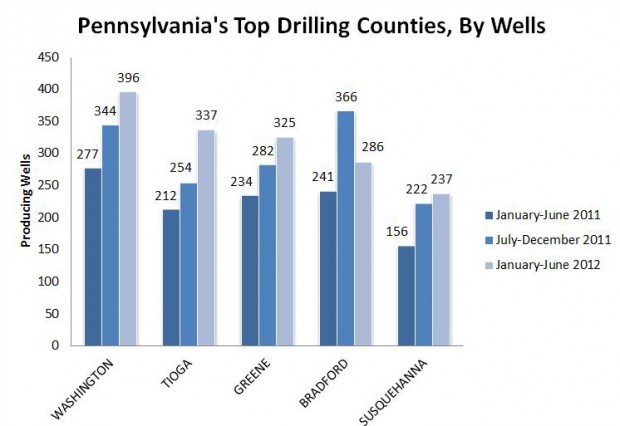A Closer Look At Pennsylvania’s Latest (But Still Incomplete) Production Report
-
Scott Detrow

Scott Detrow / StateImpact Pennsylvania
A Cabot drilling rig, located in Susquehanna County
Note: Chesapeake Energy’s production data has not been included in the Department of Environmental Protection’s report yet. The company says it submitted the information to the state by Wednesday night’s deadline, and blames a “technical issue” for the snag.
Once Chesapeake’s information is included, Bradford County’s totals will certainly go up . We’ll update this post once the new data is available.
Pennsylvania’s Marcellus Shale boom is still booming, but at a slower pace. The amount of natural gas taken out of the ground from January to June increased by an astounding 61 percent, compared to the first six months of 2011. However, over the past six months, the rate of growth has slowed to just fourteen percent. That’s according to the Department of Environmental Protection’s semi-annual production report, released in draft form today.
Natural gas drillers are required to report well-by-well production totals to the Department of Environmental Protection every six months. The preliminary January-June 2012 data was due Wednesday evening, and posted on the DEP website Thursday morning.
The number of producing wells (that means wells that are actively turning out gas) in Pennsylvania has steadily gone up over each of the last three reporting periods, from 1,646 to 2,245 to the most recent total of 2,532.
While natural gas prices have rebounded this summer due to increased energy demands, expanded domestic drilling in the Marcellus and other shale plays has steadily decreased the value of natural gas, to the point where it hit a ten-year low this spring. Analysts expect drillers to slow down the pace of extraction, in order to raise the value of gas.
Note – the following charts do not include data from Chesapeake Energy, as the company’s production totals have not been included in the DEP’s production reports. We’ll produce new graphics once the data has been uploaded.

Source: Department of Environmental Protection” credit=”
When it comes to the number of producing wells, Washington County has retaken the lead from Bradford County. The southwest county hosts nearly 400 producing wells.

Source: Department of Environmental Protection” credit=”
StateImpact Pennsylvania’s interactive Shale Play app, which tracks every well in Pennsylvania, is based off these biannual production reports. We’ll update the app with this new information in the coming weeks.
















